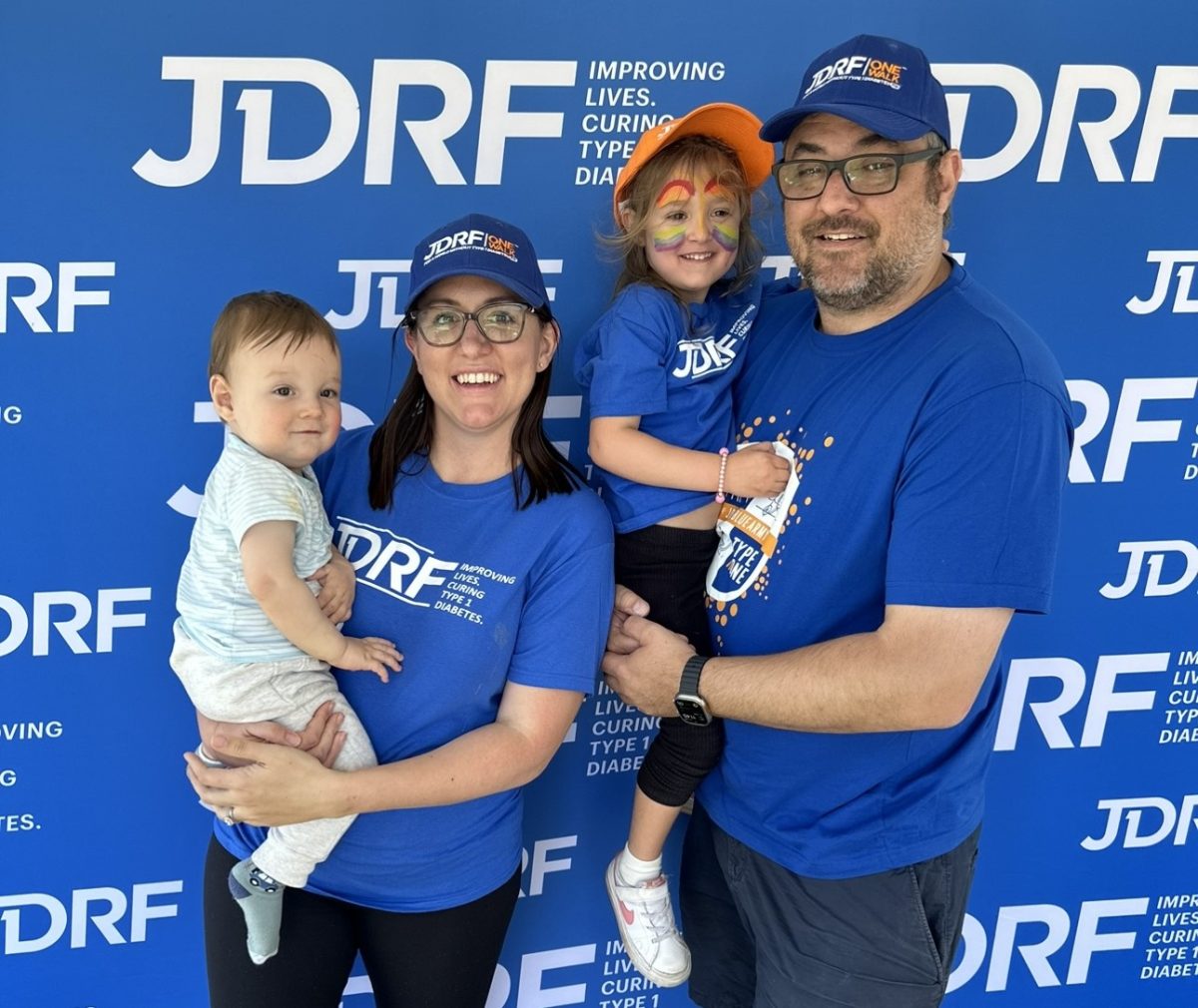
Both Angelo and Maya Konstantinou have Type-1 diabetes and wear insulin pods and glucose monitors. Photo: Emma Konstantinou.
Maya always seemed tired and thirsty and was constantly wetting through her nappies.
These symptoms might reflect a typical kid to many, but her parents had seen them before in another friend’s child. They took Maya straight to the emergency department, and sure enough, she was diagnosed with type-1 diabetes.
Diabetes is a condition where there is too much glucose (sugar) in the blood, and the body can’t make enough insulin to deal with it.
In the short term, these high levels of glucose lead to what Maya’s parents were seeing – tiredness, and kidneys working hard to pass excess glucose through the urine, leading to dehydration. In the long term, they damage blood vessels and nerves, and in turn, the heart, brain, kidneys, eyes and feet.
“Type-1 is a chronic illness where you need insulin to save your life,” Emma explains.
“The pancreas literally stops making insulin, so without insulin injections, a type-1 diabetic can die. With type-2, they still need insulin, but not as regularly and it’s more diet-controlled.”
Approximately 8.7 million people around the world live with type-1 diabetes, more than than 130,000 of whom live in Australia. Eight more Australians are diagnosed each day.
For World Diabetes Day (14 November), the family are raising awareness on how the condition can occur in children so others can avoid finding it too late.
They attended Canberra’s version of the Juvenile Diabetes Research Foundation (JDRF) ‘One Walk’ on Sunday, 29 October, from bridge to bridge on Lake Burley Griffin. Over the past 30 years, these walks around the country have raised $46 million for diabetes research.
Angelo and Emma are also organising a gala dinner at the Hellenic Club in Woden on 22 June next year (tickets go on sale in early February).

The Konstantinou family organised the JDRF ‘One Walk’ in Canberra. Photo: Emma Konstantinou.
In Maya’s case, the condition is hereditary – Angelo has type-1 diabetes, along with his father, brother and niece. But for many others, it takes the form of an auto-immune disease and only needs a trigger.
“A lot of people go through diabetes having no family history, so they don’t really know the signs to look out for,” Emma says.
“And with young children, these signs look like a cold or gastro or anything like that, so they’re quite often missed by doctors. They can become quite ill very quickly and can become a life-threatening complication called diabetic ketoacidosis (DKA) if it’s not diagnosed.”
Treatment has improved over the years, from when Angelo used to have to prick his finger 10 times a day at school to top up his insulin. Nowadays, he and Maya wear glucose monitors and insulin pods that tell them when levels get out of whack. And there are always sugary sweets on hand for whenever either of them needs a hit of glucose.
Maya is now in school where the teachers are well versed in dealing with diabetes in children, but Emma says childcare was a different story.
“Communication and education consistently and constantly with everybody and anybody who’s caring for a child with diabetes – even grandparents and family members – is key to managing it.”
It requires 24/7 care, to the point Angelo and Emma must check on Maya every night.
“It’s like holding a balloon all day to stop it from hitting the ground while living the rest of your everyday life.”
JDRF is conducting a Type 1 Diabetes National Screening Pilot in hospitals across Australia at the moment, a simple newborn screening test designed to help find children who might be susceptible to diabetes. The hope is to roll it out as a standard offering.
But ultimately, there is no cure, and it’s about learning to live with it.
“We’re stuck with devices and technology at the moment,” Emma says.
“It’s just about awareness. We like the approach of ‘diabetes doesn’t rule us’. So we do everything the same as other parents – Maya can go to parties and things like that – but we have the extra load of working out how much insulin she needs.”
For more information on diabetes in children, or to donate to research, visit the JDRF website.












